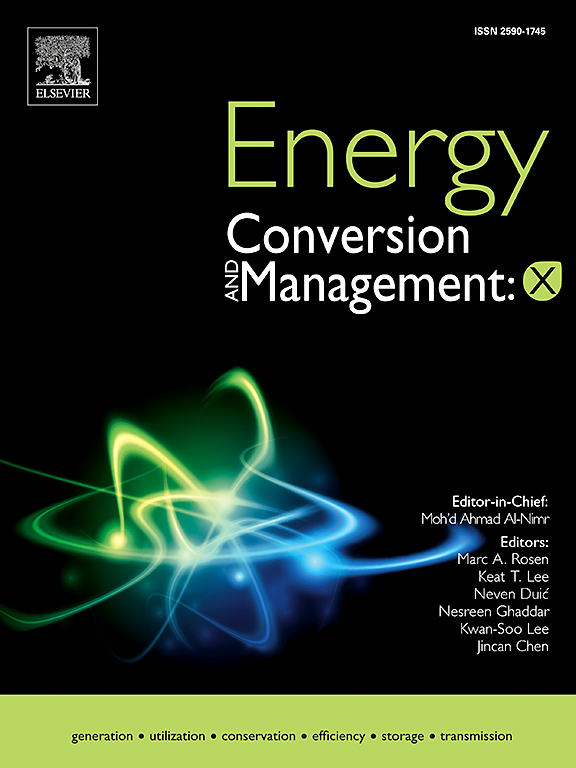集成光伏和热电能量收集器的基于 CMOS 的能量收集芯片的制作和评估
IF 7.1
Q1 ENERGY & FUELS
引用次数: 0
摘要
本研究探讨了利用互补金属氧化物半导体(CMOS)工艺开发能量收集芯片(EHC)的问题,以满足现代电子产品对高效微型能量收集器的需求。EHC 集成了热电能量收集器 (TEH) 和光电能量收集器 (PEH),以最大限度地提高能量转换效率。热电能量收集器设计中的一个关键挑战是提高功率输出,通过后处理将 41 个热电偶的冷端悬挂在热电能量收集器结构中可以解决这个问题。实验方法用于评估 TEH 的性能,结果显示,在 3 K 温差下,输出电压为 21.4 mV,最大输出功率为 9.32 nW。TEH 的电压系数为 8.9 mV/(mm2-K),功率系数为 1.3 nW/(mm2-K2)。PEH 采用新颖的图案化 p-n 结设计,将轻度掺杂的 n 型区与相互掺杂的 p 型区整合在一起,以提高结密度,从而实现高转换效率。实验结果证实了 EHC 设计的有效性,展示了其在能量收集应用中的潜力。本文章由计算机程序翻译,如有差异,请以英文原文为准。
Fabrication and evaluation of a CMOS-based energy harvesting chip integrating photovoltaic and thermoelectric energy harvesters
This study explores the development of an energy harvesting chip (EHC) using a complementary metal oxide semiconductor (CMOS) process, addressing the need for efficient micro-scale energy harvesters in modern electronics. The EHC integrates a thermoelectric energy harvester (TEH) and a photovoltaic energy harvester (PEH) to maximize energy conversion efficiency. A key challenge in TEH design is enhancing power output, which is addressed by suspending the cold ends of 41 thermocouples within the TEH structure through post-processing. Experimental methods were employed to assess the performance of the TEH, revealing an output voltage of 21.4 mV and a maximum output power of 9.32 nW under a 3 K temperature difference. The TEH demonstrated a voltage factor of 8.9 mV/(mm2·K) and a power factor of 1.3 nW/(mm2·K2). The PEH was designed with novel patterned p-n junctions, integrating lightly doped n-type regions with interdigitated p-type doping to increase junction density, resulting in high conversion efficiency. The experimental results confirm the effectiveness of the EHC design, showcasing its potential in energy harvesting applications.
求助全文
通过发布文献求助,成功后即可免费获取论文全文。
去求助
来源期刊

Energy Conversion and Management-X
Multiple-
CiteScore
8.80
自引率
3.20%
发文量
180
审稿时长
58 days
期刊介绍:
Energy Conversion and Management: X is the open access extension of the reputable journal Energy Conversion and Management, serving as a platform for interdisciplinary research on a wide array of critical energy subjects. The journal is dedicated to publishing original contributions and in-depth technical review articles that present groundbreaking research on topics spanning energy generation, utilization, conversion, storage, transmission, conservation, management, and sustainability.
The scope of Energy Conversion and Management: X encompasses various forms of energy, including mechanical, thermal, nuclear, chemical, electromagnetic, magnetic, and electric energy. It addresses all known energy resources, highlighting both conventional sources like fossil fuels and nuclear power, as well as renewable resources such as solar, biomass, hydro, wind, geothermal, and ocean energy.
 求助内容:
求助内容: 应助结果提醒方式:
应助结果提醒方式:


